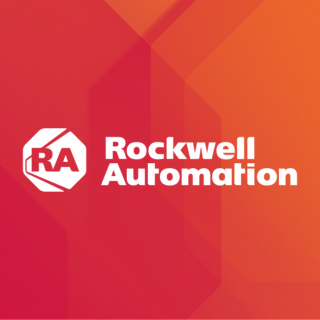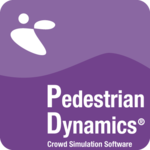Description

Arena Simulation

Simile
Comprehensive Overview: Arena Simulation vs Simile
Certainly! Below is a comprehensive overview of Arena Simulation and Simile, focusing on their functions, target markets, market share, user base, and key differentiating factors.
Arena Simulation
a) Primary Functions and Target Markets
Primary Functions:
- Process Modeling: Arena Simulation is used to build and analyze discrete event simulation (DES) models. It assists users in optimizing complex operational processes.
- Performance Analytics: It provides tools for testing and predicting future performance scenarios, facilitating experimentation with various operational strategies without the risk of real-world experimentation.
- Resource Allocation: Through visualization and optimization, users can understand resource needs and enhance productivity by identifying bottlenecks.
Target Markets:
- Manufacturing: Used widely for process optimization, production line arrangement, and throughput analysis.
- Supply Chain and Logistics: For optimizing the flow of goods and services, warehouse operations, and distribution channels.
- Healthcare: Employed in patient flow analysis and resource management.
- Service Industries: Applicable in banking, telecommunications, and customer service for process improvements and efficiency gains.
b) Market Share and User Base
Arena Simulation is one of the industry leaders in discrete event simulation. Developed by Rockwell Automation, it is recognized for its extensive user base, primarily because it's one of the earliest entrants and offers robust functionality for various industrial applications. However, specific market share data would vary widely based on geographic and industry segments. It maintains a strong presence in manufacturing and logistics fields globally.
c) Key Differentiating Factors
- Legacy and Reputation: As one of the oldest tools in the market, Arena is well-trusted for its reliability and comprehensive user support.
- Enterprise Integration: Offers strong integration capabilities with enterprise systems and other Rockwell Automation products, making it suitable for large-scale industrial applications.
- Flexibility and Scalability: Highly flexible, allowing users to create detailed and complex models tailored to their specific needs.
Simile
a) Primary Functions and Target Markets
Primary Functions:
- System Dynamics and Agent-Based Modeling: Simile is used to create complex models combining both system dynamics and agent-based approaches.
- Ecological and Environmental Modeling: Ideal for simulating models with spatial and temporal components, explicitly linking ecological processes with socio-economic factors.
- Policy Analysis: Useful in policy analysis to visualize and predict the outcomes of policy implementations over time.
Target Markets:
- Environmental Sciences: Strong presence in ecological, environmental, and agricultural modeling.
- Academic and Research Institutions: Widely used in education and research for its capacity to model complex biological and ecological systems.
- Policy Making Bodies: For simulating potential impacts of policy decisions on ecological systems and sustainability.
b) Market Share and User Base
Simile is more niche compared to Arena Simulation, with a significant presence in academic and research settings, and among ecological modelers. Its market share is smaller, primarily due to its specialized application focus and less penetration in commercial sectors. However, it has a dedicated user base especially within ecological and environmental modeling communities.
c) Key Differentiating Factors
- Specialization in Environmental Modeling: Unlike Arena, Simile excels in incorporating spatial and system dynamics elements, making it ideal for environmental applications.
- Simplicity and Accessibility: Designed to be user-friendly with easier accessibility for non-technical users, particularly those in academic settings.
- Visual and Modular Design: Provides a highly visual approach to model building, making it comparatively more intuitive for system dynamics applications.
Conclusion
In summary, while Arena Simulation and Simile both serve modeling and simulation functions, they cater to different markets and utilize distinct modeling approaches. Arena's strength lies in industrial applications and process optimization, whereas Simile is specialized and widely used in ecological and environmental modeling fields. The choice between them often depends on the specific requirements of the industry and the complexity of the systems being modeled.
Contact Info

Year founded :
Not Available
+1 412-375-4700
Not Available
United States
Not Available

Year founded :
2019
Not Available
Not Available
United States
Not Available
Feature Similarity Breakdown: Arena Simulation, Simile
When analyzing systems modeling and simulation software such as Arena Simulation and Simile, it's important to look at both the overlapping capabilities and unique distinctions each offers. Here's a breakdown based on these criteria:
a) Core Features in Common
-
Modeling and Simulation: Both Arena and Simile offer robust environments for discrete-event and continuous simulation. They allow users to model complex systems by creating, modifying, and analyzing simulations to optimize processes.
-
Graphical User Interface (GUI): They provide a visual platform where users can build models using flowcharts or other visual elements, making the setup intuitive and reducing the need for manual coding.
-
Statistical Analysis: Each tool provides functionality to collect, analyze, and report statistical data. They both offer insight into performance measures like throughput, resource utilization, and queue lengths.
-
Scalability: Both systems are capable of handling large and small models, making them suitable for a wide range of industries and applications.
-
Integration Capabilities: Arena and Simile can integrate with external data sources and export data for further analysis, ensuring connectivity with databases and other software systems.
b) User Interface Comparison
-
Arena Simulation:
- The interface is designed with a flowchart methodology, focusing on modules that represent different aspects of the system.
- It is known for being highly intuitive with drag-and-drop functionalities, which makes it accessible to users with varying levels of experience.
- Arena includes a library of modules and templates that users can use to quickly assemble models.
-
Simile:
- Simile uses a system-dynamics approach combined with object-oriented modeling and a visual environment.
- The interface allows for the creation of agent-based models with specific icons and connectors, which is particularly useful in ecological and environmental simulations.
- It emphasizes a hierarchical model-building approach, which provides a more flexible and structured way to construct complex models.
c) Unique Features
-
Arena Simulation:
- Focuses extensively on industrial engineering and is tailored for business processes such as manufacturing, logistics, and healthcare.
- It offers specialized modules for process analysis and optimization which are particularly suitable for operational research.
- Arena has a strong emphasis on animation and visualization tools for stakeholders who benefit from watching a simulation in near-real-time.
-
Simile:
- Known for strengths in ecological and environmental sciences; its support for hierarchical and modular model building sets it apart in these fields.
- It supports equation-based modeling, making it more suitable for users who wish to integrate detailed mathematical formulations into simulations.
- Simile's support for hybrid models that combine continuous and discrete elements is a key feature that appeals to scientists and researchers requiring detailed, complex systems analysis.
In conclusion, both Arena Simulation and Simile are powerful tools in the domain of simulation but cater to different niches and user needs. Arena is better suited for industry scenarios with a need for process optimization and business analytics, while Simile offers a more scientific approach, ideal for detailed ecological models and environmental simulations.
Features

Not Available

Not Available
Best Fit Use Cases: Arena Simulation, Simile
Arena Simulation and Simile are distinct simulation tools with unique strengths, and they cater to different types of businesses, projects, and industries. Here's a breakdown of their best-fit use cases:
a) Arena Simulation
Types of Businesses or Projects:
- Manufacturing: Arena Simulation is frequently used in manufacturing to model complex production processes, optimize assembly lines, and manage resource allocation.
- Logistics and Supply Chain: It's well-suited for logistics companies looking to improve warehouse efficiency, distribution networks, and inventory management.
- Healthcare: Hospitals and clinics use Arena to simulate patient flow, optimize scheduling, and resource utilization.
- Transportation: The tool is used to model transportation systems, helping in decision-making for public transit planning, airport operations, and fleet management.
Features and Strengths:
- Discrete Event Simulation (DES): Arena excels in DES, making it ideal for systems with distinct events and queues.
- Intuitive Interface: Its user-friendly drag-and-drop interface allows businesses to easily model real-world processes.
- Scalability: Arena can handle large-scale simulations, making it suitable for medium to large enterprises that require detailed analysis.
b) Simile
Preferred Scenarios:
- Environmental and Ecological Modeling: Simile is often used for modeling complex environmental systems, such as ecosystem dynamics, climate change models, and resource management.
- Agricultural Research: It supports the simulation of agricultural processes, crop growth, and livestock management.
- Academic Research: Simile is popular in academia for research involving complex system dynamics and causal loop diagrams.
Features and Strengths:
- System Dynamics and Agent-Based Modeling: Simile combines system dynamics with agent-based modeling, allowing the simulation of both continuous processes and individual agent behaviors.
- Visual Modeling Language: Its visual approach facilitates understanding and allows for sophisticated model creation without extensive programming knowledge.
- Flexibility: It is versatile for modeling a variety of natural and human systems, particularly those that are hierarchical or spatially distributed.
d) Catering to Different Industry Verticals or Company Sizes
Arena Simulation:
- Industry Verticals: Arena serves diverse industries, including manufacturing, logistics, healthcare, and transportation. Its flexibility and robust capabilities make it a preferred choice for industries requiring detailed analysis of discrete events.
- Company Sizes: Although often used by medium to large enterprises, its scalability and adaptability make it accessible to smaller companies wanting to optimize processes efficiently.
Simile:
- Industry Verticals: While it can be applied across various domains, it primarily serves environmental sciences, agricultural research, and systems biology due to its strengths in system dynamics and agent-based modeling.
- Company Sizes: Typically utilized by research institutions, non-profits, and smaller companies focused on environmental and ecological projects. Larger enterprises with specific needs in these areas may also find Simile beneficial.
In summary, Arena Simulation is the best choice for businesses requiring detailed discrete event simulations in industries like manufacturing and logistics, while Simile excels in environmental and ecological modeling scenarios where system dynamics are crucial. Each tool caters to different needs based on the complexity and nature of the processes being modeled.
Pricing

Pricing Not Available

Pricing Not Available
Metrics History
Metrics History
Comparing undefined across companies
Conclusion & Final Verdict: Arena Simulation vs Simile
When evaluating Arena Simulation and Simile for simulation purposes, several factors must be taken into account, including ease of use, functionalities, cost, and support.
a) Best Overall Value
Best Overall Value: Deciding which product offers the best value depends largely on the specific needs of the user. Arena Simulation tends to provide a more robust and comprehensive suite of tools for industrial simulation, making it suitable for complex operations and detailed process optimization. In contrast, Simile focuses more on ecological and environmental modeling, which might offer better value for researchers or academics in those fields due to its specialized capabilities.
b) Pros and Cons
Arena Simulation:
-
Pros:
- Widely recognized in industrial and manufacturing sectors.
- Robust set of features for discrete event simulation.
- Strong integration with other professional tools.
- Extensive support and community resources.
-
Cons:
- Can be expensive, especially for smaller teams or individual users.
- Steeper learning curve due to its comprehensive suite of features.
- Primarily focused on certain types of simulations (e.g., industrial, manufacturing).
Simile:
-
Pros:
- Strong focus on system dynamics and ecological/environmental modeling.
- More affordable pricing options, especially for educational use.
- User-friendly interface that may have a faster learning curve for its intended applications.
-
Cons:
- Limited to its niche application areas, which can be a downside if broader simulation capabilities are needed.
- Smaller user community, which might affect the availability of support resources.
- Fewer integration options compared to larger simulation platforms like Arena.
c) Recommendations for Users
Recommendations:
-
For Industrial and Manufacturing Needs: Users who require comprehensive tools for detailed process optimization, and who have the resources to invest in a more expensive platform, may find Arena Simulation to be the more valuable choice. Its extensive capabilities specifically cater to complex industrial scenarios, which justifies the cost for large-scale operations.
-
For Environmental and Academic Research: Users interested in modeling ecological systems or educational purposes could benefit more from Simile's specialized functionalities. Its cost-effectiveness and ease of use make it particularly appealing for academic institutions and researchers who don't require the broader capabilities of Arena Simulation.
-
For General Use and Mixed Needs: If the simulation needs are more generalized and cost is a significant constraint, it might be wise to test both tools, if possible, and see which aligns more naturally with the specific scenarios you plan to simulate.
Users should consider their specific project requirements, budget constraints, and long-term goals when choosing between Arena Simulation and Simile. Each software has its strengths catering to different sectors, and accordingly, the choice should be based on alignment with project requirements rather than a generalized notion of value.
Add to compare
Add similar companies



